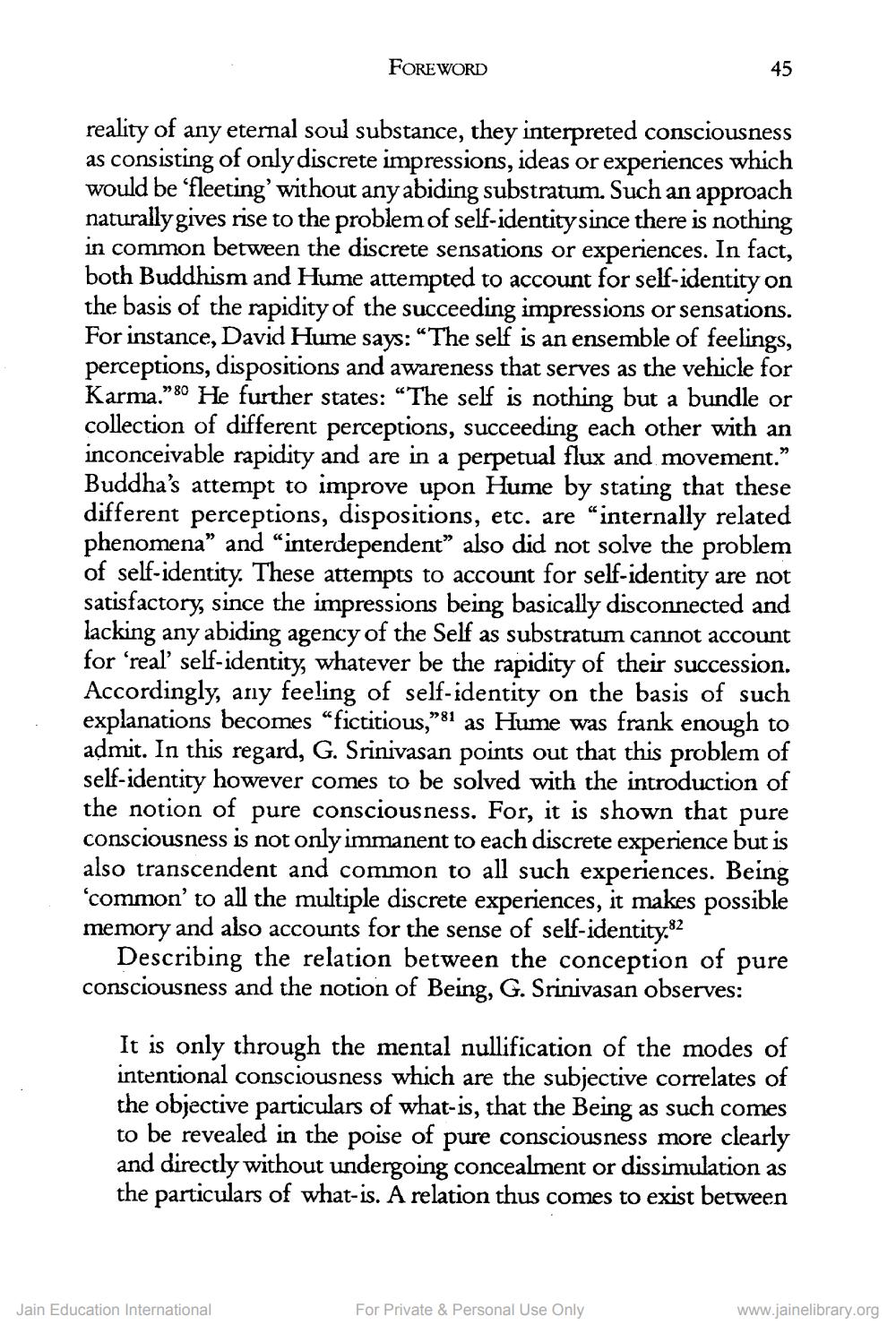________________
FOREWORD
45
reality of any eternal soul substance, they interpreted consciousness as consisting of only discrete impressions, ideas or experiences which would be "fleeting' without any abiding substratum. Such an approach naturally gives rise to the problem of self-identity since there is nothing in common between the discrete sensations or experiences. In fact, both Buddhism and Hume attempted to account for self-identity on the basis of the rapidity of the succeeding impressions or sensations. For instance, David Hume says: “The self is an ensemble of feelings, perceptions, dispositions and awareness that serves as the vehicle for Karma.”80 He further states: “The self is nothing but a bundle or collection of different perceptions, succeeding each other with an inconceivable rapidity and are in a perpetual flux and movement." Buddha's attempt to improve upon Hume by stating that these different perceptions, dispositions, etc. are “internally related phenomena” and “interdependent" also did not solve the problem of self-identity. These attempts to account for self-identity are not satisfactory, since the impressions being basically disconnected and lacking any abiding agency of the Self as substratum cannot account for ‘real self-identity, whatever be the rapidity of their succession. Accordingly, any feeling of self-identity on the basis of such explanations becomes “fictitious, »81 as Hume was frank enough to admit. In this regard, G. Srinivasan points out that this problem of self-identity however comes to be solved with the introduction of the notion of pure consciousness. For, it is shown that pure consciousness is not only immanent to each discrete experience but is also transcendent and common to all such experiences. Being 'common’to all the multiple discrete experiences, it makes possible memory and also accounts for the sense of self-identity.82
Describing the relation between the conception of pure consciousness and the notion of Being, G. Srinivasan observes:
It is only through the mental nullification of the modes of intentional consciousness which are the subjective correlates of the objective particulars of what-is, that the Being as such comes to be revealed in the poise of pure consciousness more clearly and directly without undergoing concealment or dissimulation as the particulars of what-is. A relation thus comes to exist between
Jain Education International
For Private & Personal Use Only
www.jainelibrary.org




